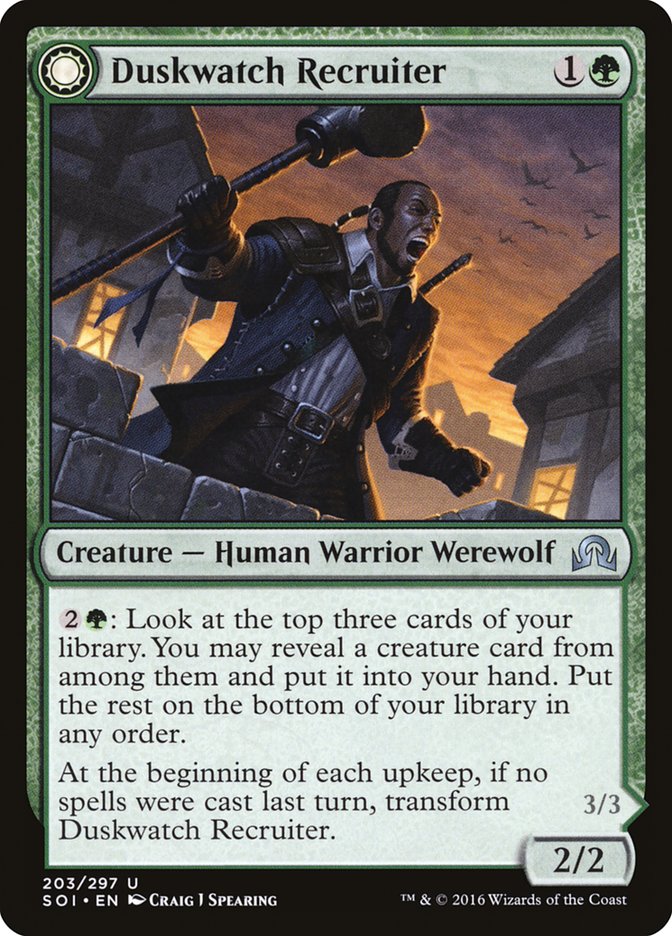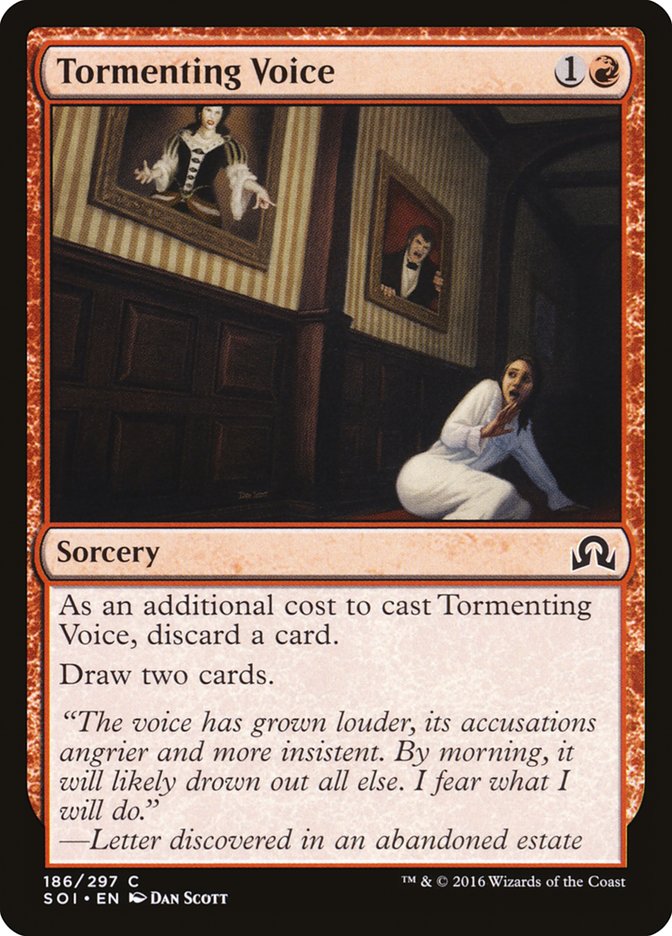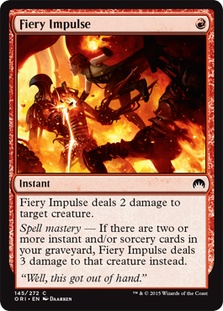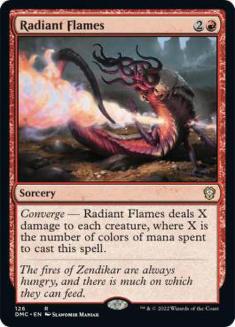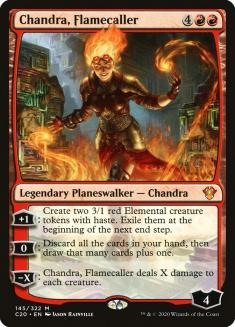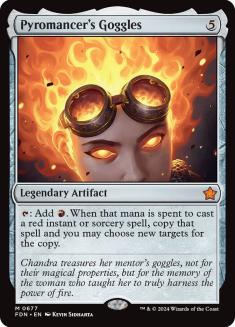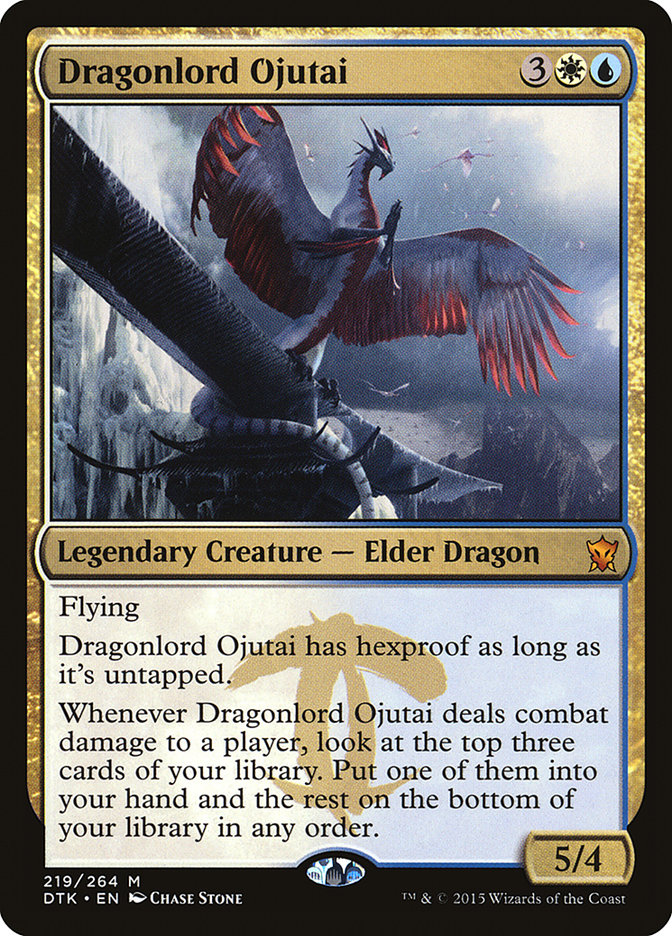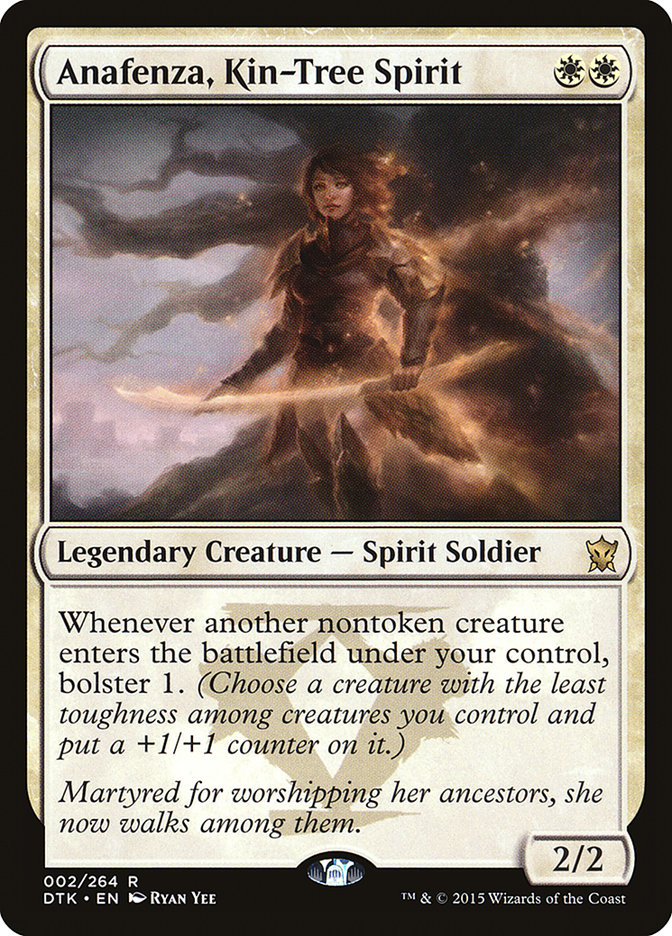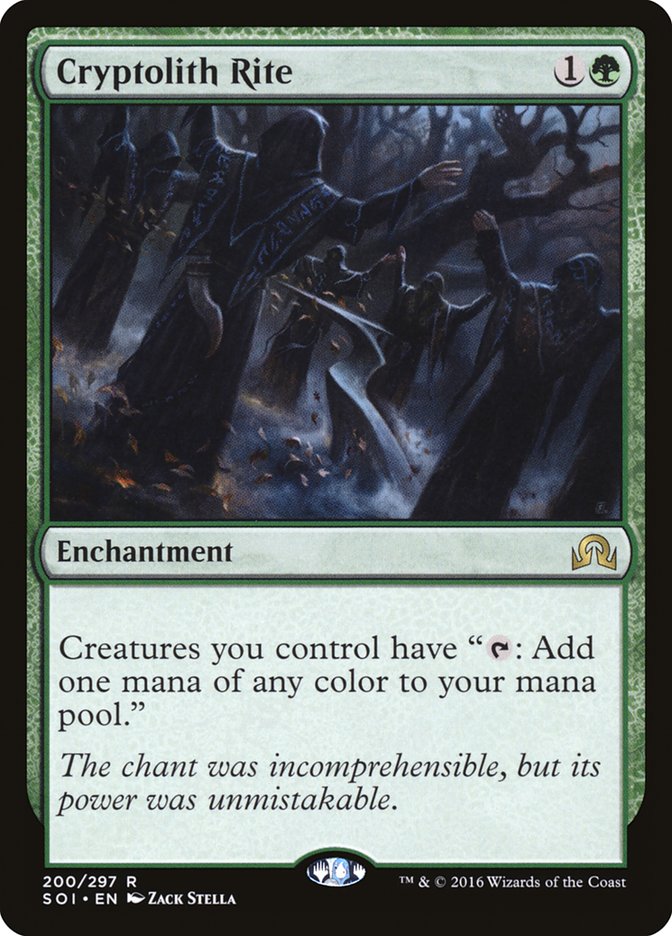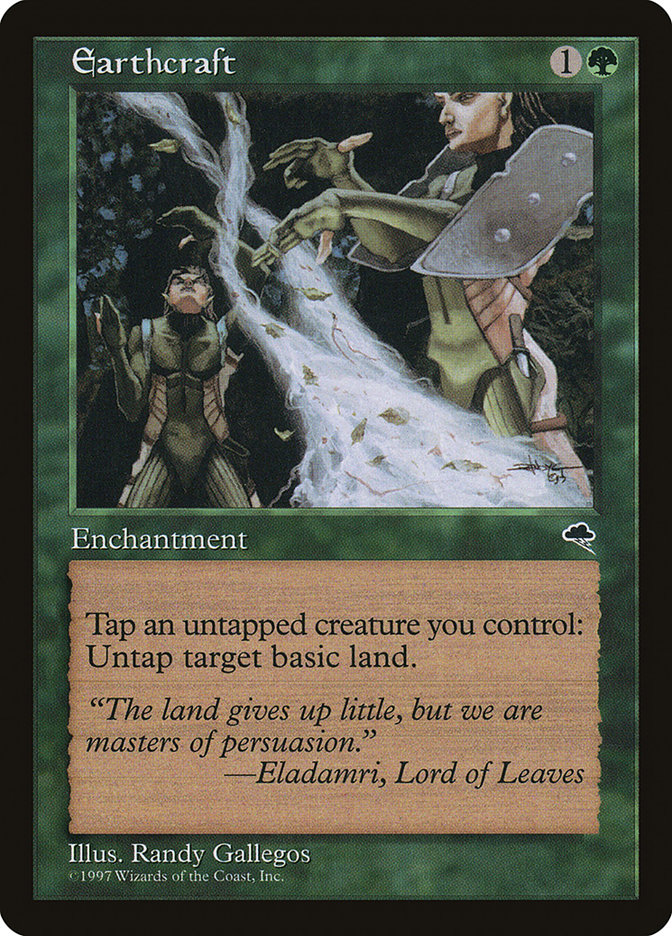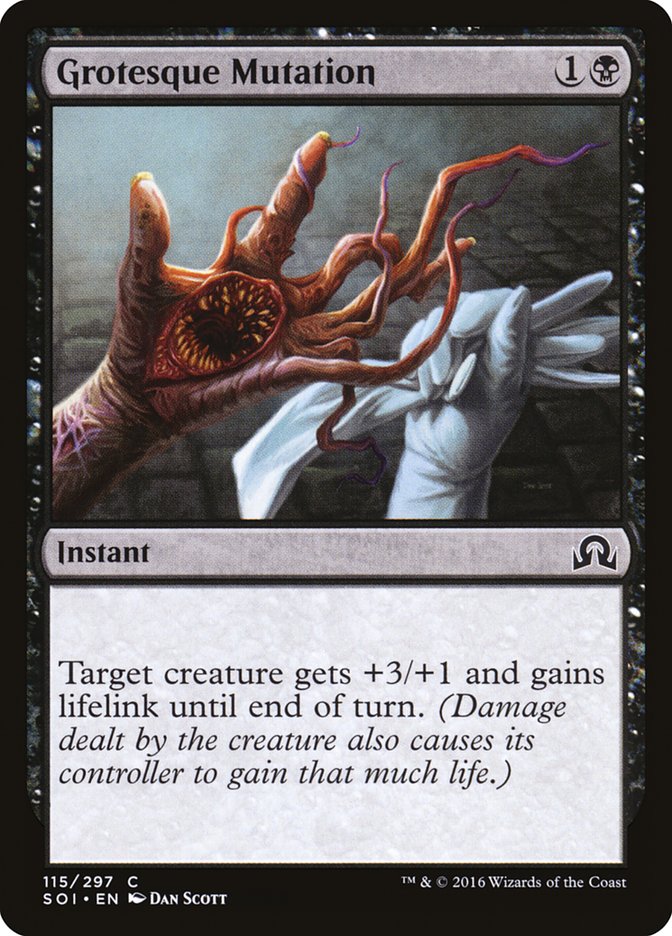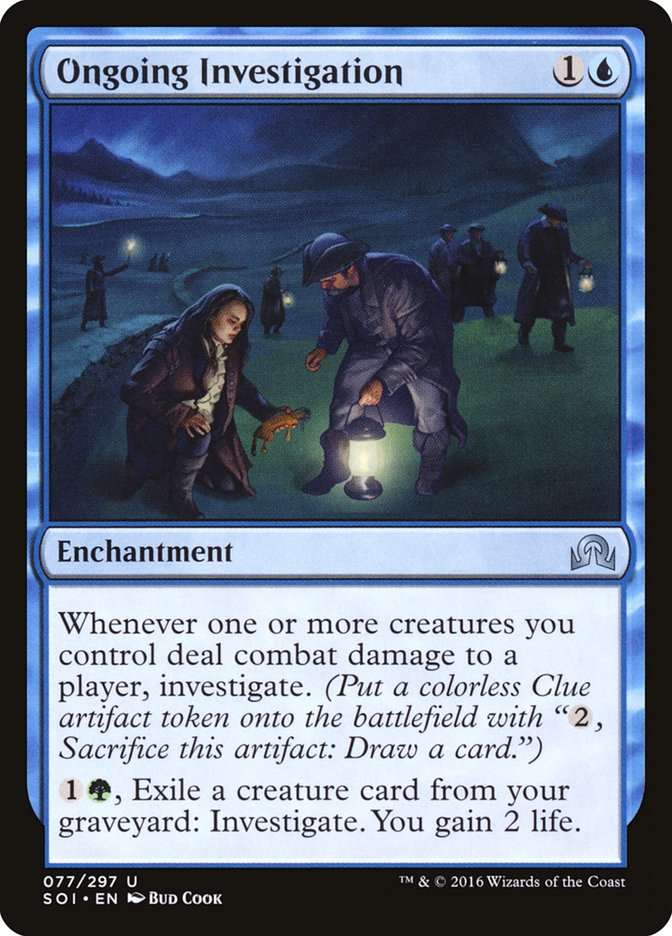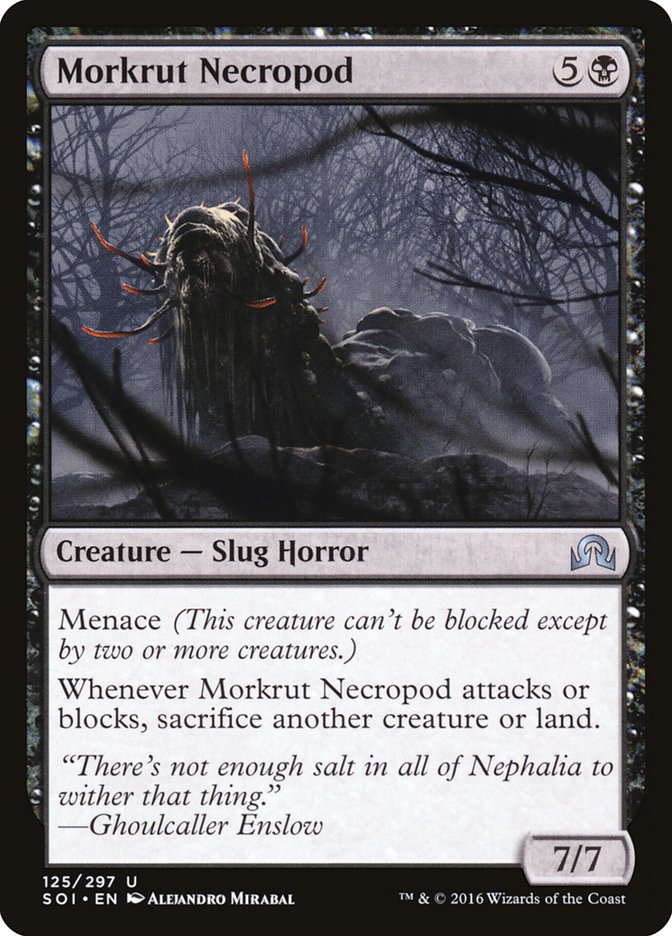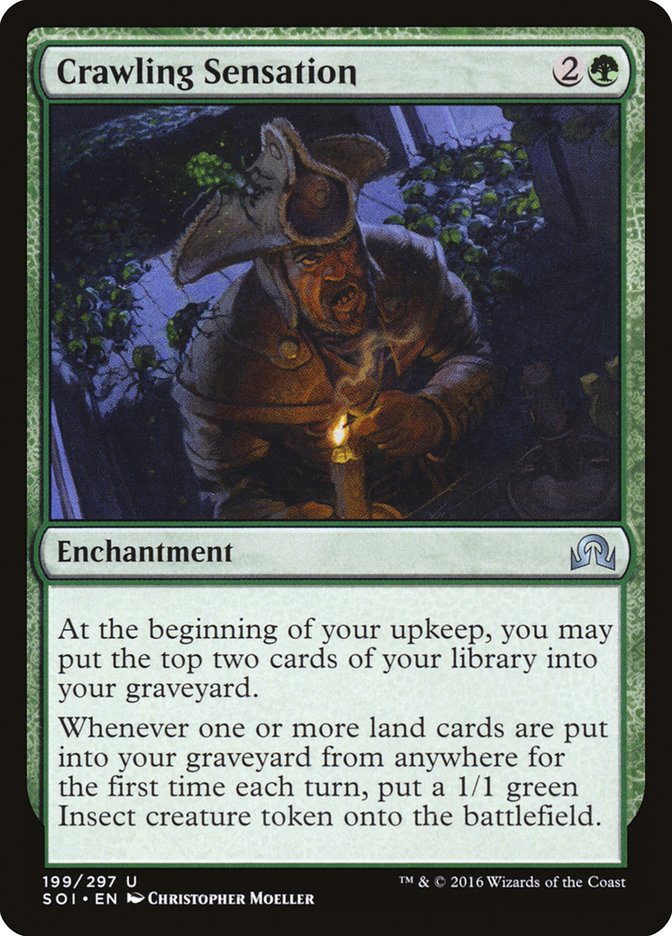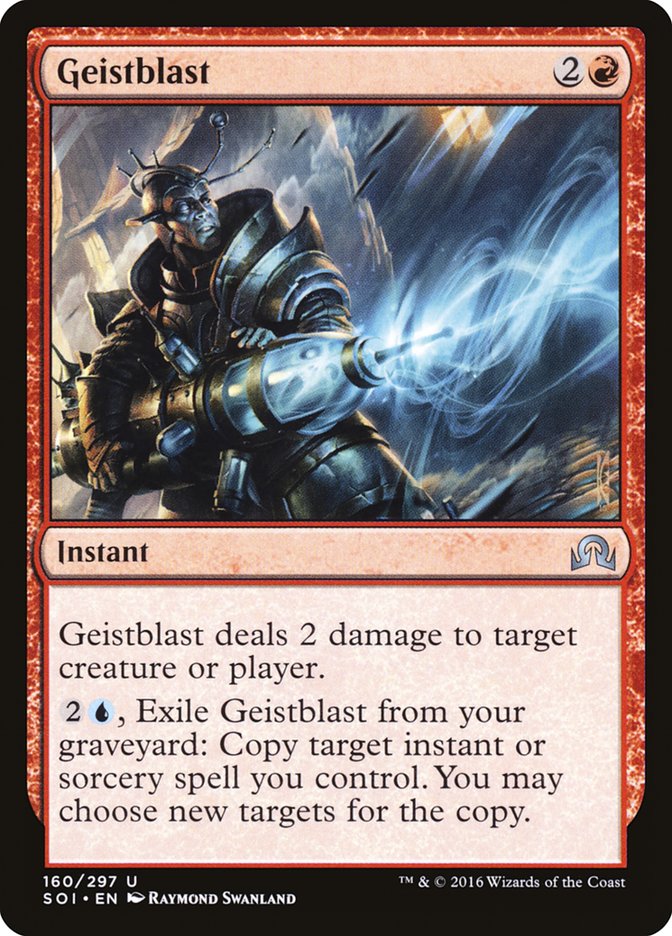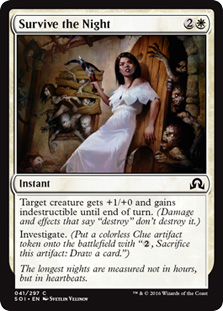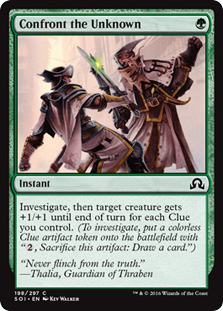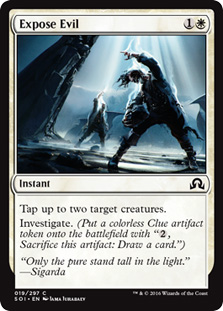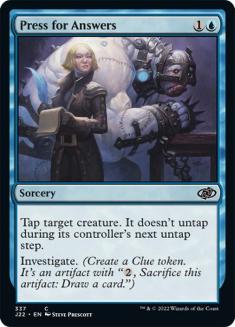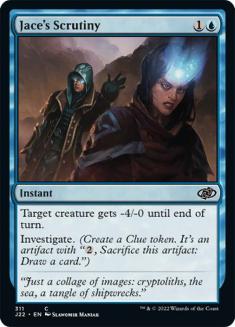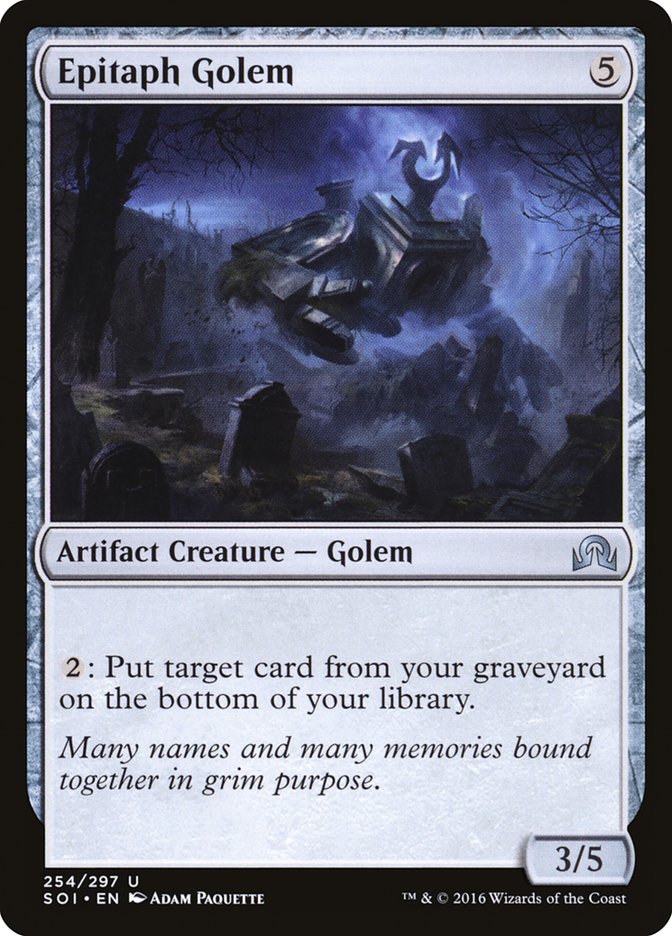 Duskwatch Recruiter
Duskwatch Recruiter
Everyone knows Duskwatch Recruiter is good, but it’s probably even better than that. It breaks open games at all stages. Early on, the threat of Duskwatch Recruiter transforming is huge as one player’s battlefield will explode. The threat of it surviving into the mid-game is also huge as it enables one player to keep making plays through attrition. The threat of it being topdecked in the late-game is huge as one player will suddenly bury their opponent in cards.
So far we have only seen Duskwatch Recruiter with Collected Company, but if your deck plays more than fourteen or fifteen other creatures, I would strongly consider trying Duskwatch Recruiter.
Constructed #7: Tormenting Voice
This card is one of the quiet overperformers of the format. Look at the other good red cards in the format.
You have lots of power, but it’s all conditional: removal that is blank against some decks or threats, high-cost cards that do little in multiples. Tormenting Voice evens it all out while your powerful sweepers catch you up.
Red is also shallow, and the mana in the format is shaky once you start branching out. Tormenting Voice yet again comes to the rescue, both finding extra colors and smoothing the results of 26-land manabases to find a happy medium between mana screw and mana flood.
Constructed #6: Ever After
The deck for Ever After didn’t quite get there in our testing, but the card showed promise. The more recent reanimation spells have been bad because they don’t get you much. You are paying four or five mana to bring back something that costs seven, which, once you jump through the setup hoop, isn’t actually any gain. With Ever After, you are going up a card and can get twelve or more mana out of your spell, which is a huge swing.
That said, I didn’t like the card in a pure reanimation strategy as consistency is an issue. Casting the big fatties in this format is perfectly fine, and the discard outlets are good cards on their own. You can play a normal deck that does this.
This was the last Ever After list we were looking at in testing, which is a four-color midrange deck that just happens to top out at Dragonlord Atarka and have good targets to reanimate that it could also tutor for with Traverse the Ulvenwald. The problem was that Mindwrack Demon was bad against Reflector Mage, but Bant Company’s stranglehold on the format is unlikely to last.
Creatures (17)
- 1 Dragonlord Silumgar
- 2 Dragonlord Atarka
- 1 Dragonlord Kolaghan
- 4 Jace, Vryn's Prodigy
- 1 Greenwarden of Murasa
- 4 Sylvan Advocate
- 4 Mindwrack Demon
Lands (24)
Spells (19)
- 3 Ultimate Price
- 2 Kolaghan's Command
- 2 Draconic Roar
- 3 Radiant Flames
- 3 Oath of Jace
- 4 Traverse the Ulvenwald
- 2 Ever After
Sideboard

Don’t try to cut blue from here. We tried an Abzan delirium deck and it failed horribly as it struggled to utilize the non-creature spells it was putting into its graveyard. Jace, Vryn’s Prodigy acting as a very powerful Regrowth you can Traverse the Ulvenwald for is the real payoff here, almost as much as Ever After is.
Aside: I’m pretty convinced Traverse the Ulvenwald is the next broken thing in Eternal formats, as is usually the case with one-mana tutors. It was super-powerful in Standard, and while I don’t know what shell it belongs in, obtaining delirium seems easy with fetchlands. The key is finding a shell where Rest in Peace or other graveyard hate doesn’t interact with your non-Traverse cards so you can’t be beaten by a basic sideboard card.
Constructed #5: Dragonlord Ojutai
I don’t really like the position of control decks in Standard at the moment, but if I had to choose one, it would be playing Dragonlord Ojutai. All of the midrange decks are capable of grinding out games for so long that the control deck eventually stumbles and dies too often to be pure control.
Rather than trade for ten turns until Bant Company maybe runs out of action, I want to kill them. Dragonlord Ojutai is still the best way to do this, as one hit is often technically enough to win the game and the second is usually overkill thanks to the Anticipate trigger.
Constructed #4: Anafenza, Kin-Tree Spirit
The primary way people are attacking the Humans decks in this format is with sweepers. The problem is that all of the sweepers fast enough to matter have some toughness cap. When you can stack multiple pump effects, it is relatively easy for the one-drop-heavy Mono-White versions of Humans to create a lethal battlefield with a four-toughness threat that survives Radiant Flames or Kozilek’s Return. Anafenza, Kin-Tree Spirit is a key part of that, allowing you to regularly have multiple pump effects early enough to get something out of range. Languish is a bit harder as it often comes with an Ultimate Price to kill the thing big enough to survive, but given that Languish costs four, killing them first is still viable there.
This is the list I would recommend for Humans players going forward, as played to an 8-2 finish by fellow Team Ultra PRO member Pat Cox:
Creatures (32)
- 4 Knight of the White Orchid
- 3 Anafenza, Kin-Tree Spirit
- 4 Dragon Hunter
- 3 Kytheon, Hero of Akros
- 2 Anointer of Champions
- 4 Expedition Envoy
- 4 Thraben Inspector
- 4 Thalia's Lieutenant
- 4 Town Gossipmonger
Lands (18)
- 18 Plains
Spells (10)

Constructed #3: Gryff’s Boon
I originally liked this card because of how it lined up against Dromoka’s Command, but it turns out that just granting flying is more than enough. All of the current creature and midrange decks have big issues dealing with a large, fast flying attacker. Given the sheer percentage of games that were described as “They drew a Gryff’s Boon and I just lost” in our playtesting, I would absolutely consider this a key part of white aggro moving forward. If things move away from Duskwatch Recruiter and towards maindeck Ultimate Price, it might just be a sideboard card, but there will always be three or four copies of this card in my 75 if I decide to play Thalia’s Lieutenant.
Constructed #2: Basic lands
You know what made the Bant Company manabase even better than the stock one built by Kevin Jones and Jim Davis? Cutting Port Town and Fortified Village for two basic lands so you played on-curve more often.
You know what made the Humans manabase curve out as frequently as possible? Just playing eighteen basic Plains.
You know what the last step in making our G/B Sacrifice list as optimized as possible for the Pro Tour was? Cutting all the Foul Orchards and the couple of extra colorless value lands they afforded you to play mostly basic lands.
Entering the battlefield untapped is an underappreciated ability, especially when so many of your other lands only have it when enabled by your unassuming basic lands. I assure you that, however many basic lands you think your deck wants to play when you start building, your number is likely one or two less than the real answer.
If you start playing with Shadow lands and Battle lands and can’t find room for fourteen basics (or Evolving Wilds if just Battle lands), don’t be shocked to find that the whole idea was a mess to begin with.
Constructed #1: Cryptolith Rite
Earthcraft is literally banned in Legacy.
Cryptolith Rites is kind of an Earthcraft minus the built-in haste.
With the B/G Sacrifice deck that Team Ultra PRO played at Pro Tour Shadows over Innistrad, we started off boarding out Cryptolith Rite against a lot of things as it seemed vulnerable to sweepers or Dromoka’s Command. Over the event, it became very clear that was wrong except against true control decks. Cryptolith Rite just lets you do broken things and is reminiscent of the kinds of Magic cards they just don’t make any more, often involving putting large portions of your deck onto the battlefield with Duskwatch Recruiter.
If any single card from Shadows over Innistrad breaks wide open, it is going to be this one.
Limited
Limited #8: Grotesque Mutation
Grotesque Mutation reads like a bad combat trick, but it plays significantly better. The raw life swings generated by the card are too big to ignore, especially with green creatures. G/B delirium is also short on good instants, and this works well in many red decks due to Uncaged Fury. The first copy of Grotesque Mutation makes most of my black decks, and the second often does too.
Limited #7: Ongoing Investigation
This is one of the best non-rares in the set, and many people were just treating it like a generic okay multicolored card.
If you are base-blue, this draws a bonus card every turn and goes crazy with a simple splash off Woodland Stream. If you are base-green, this is an easily splashable effect that just turns around a game with life and Clues generated. Take it highly and play it.
Limited #6: Rise from the Tides
U/R Spells is one of the core archetypes of Shadows over Innistrad Limited, largely due to Pyre Hound being common. These decks naturally tend towards twelve instants and sorceries with a large amount of card filtering, meaning Rise from the Tides for six is not something you necessarily have to go too far out of the way to enable.
Whether you are all-in and play Pieces of the Puzzle to find your Zombie generator or also have aggressive Uncaged Fury / Rush of Adrenaline / Niblis of Dusk kills varies from draft to draft, but Rise from the Tides never fails to impress. You can’t force the archetype, but taking this highly and seeing if it pays off is not out of the question.
Limited #5: Morkrut Necropod
A 7/7 is beyond massive and menace forcing double-blocks eliminates a lot of the issues non-evasive finishers normally have. The fact that Morkrut Necropod only costs six to cast and is easy to pick up at uncommon means a lot of black decks can rely on it as a finisher. The drawback rarely matters and can even be an upside with delirium. Not every deck needs a six-drop finisher, but every time I have one that does, Morkrut Necropod continues to impress me in the role.
Limited #4: Crawling Sensation
One of the major green archetypes is delirium, usually for Moldgraf Scavenger, Autumnal Gloom, and Obsessive Skinner. Vessel of Nascency is the most important common for the archetype, but it only shows up so often. Crawling Sensation is a fine replacement, and I’ve even played Shard of Broken Glass in a pinch.
The reason Crawling Sensation gets the nod here is because it is so unique. Making Insects isn’t a lot but it buys time. There are tons of ways to discard or sacrifice lands for bonus 1/1s on your opponent’s turn or even just to ensure the bonus on yours. It also is in a nice power medium: decks with some delirium will gladly play Vessel but pass on the uncommon enchantment, while Shard of Broken Glass is just mediocre in defensive decks. This means you get Crawling Sensation late enough to make it a big deal.
Also, unlike Vessel of Nascency, the effect on Crawling Sensation is always repeatable, but more on that in a minute.
Limited #3: Geistblast
There are a lot of things that the “Flashback” side of Geistblast can double down on that just end a game. Often something as simple as a Fiery Temper is backbreaking, but Malevolent Whisper usually ends the game. The mondo-combo is Startled Awake, which is basically the Draft version of Splinter Twin combo with Geistblast, as milling 26 cards is at most within a card or two of a one-shot kill.
The big thing is that these are all cards the U/R decks want to play already, making Geistblast amazing in those decks. Even in other red decks, a three-mana two-damage spell isn’t horrific, meaning you can easily pick up a Highland Lake or other splash land to access a very powerful effect.
Limited #2: Cheap clue-generating tricks
All of the tricks that just incidentally make a Clue are much better than they look. Unlike traditional cantrip combat tricks, you aren’t required to spend additional mana on them that turn. You don’t have Second Thoughts issues where you end up tempo-negative when you Jace’s Scrutiny their random attacker. You just end up ahead now and ahead later when you Crack the clue.
Even the unassuming Press for Answers that looks much worse than Crippling Chill due to its sorcery speed turned out to play very well. The only one of these that is more on the cuttable side is Survive the Night, and that is because the three cost makes it clunky instead of smooth.
Limited #1: Epitaph Golem
It turns out putting your deck into your graveyard is an easy win condition when you have an uncommon Laboratory Maniac. In green delirium decks with Crawling Sensation or Shard of Broken Glass, you can easily put your library into your graveyard. From an empty library, Epitaph Golem regularly creates games where you are drawing a removal spell or giant threat every turn and burying your opponent. The key is having a plan for when you mill the Golem, which is often just Macabre Waltz or a second Epitaph Golem. This often doubles as a plan for if they kill the Golem, but often just stacking a few extra cards in response does the trick too.
Epitaph Golem isn’t flashy, but in the decks that want it the most, there really aren’t a lot of things quite like it.
We’re Not Done Yet
The most interesting part of all of this is that it seems we are still scratching the surface of both formats. Three weeks simply isn’t enough time to have discovered the full potential of every card in this set in both Limited and Constructed. If this weekend is any indication, expect to see some really fun ones show up as the constraints of the format ebb and flow over the next months.

